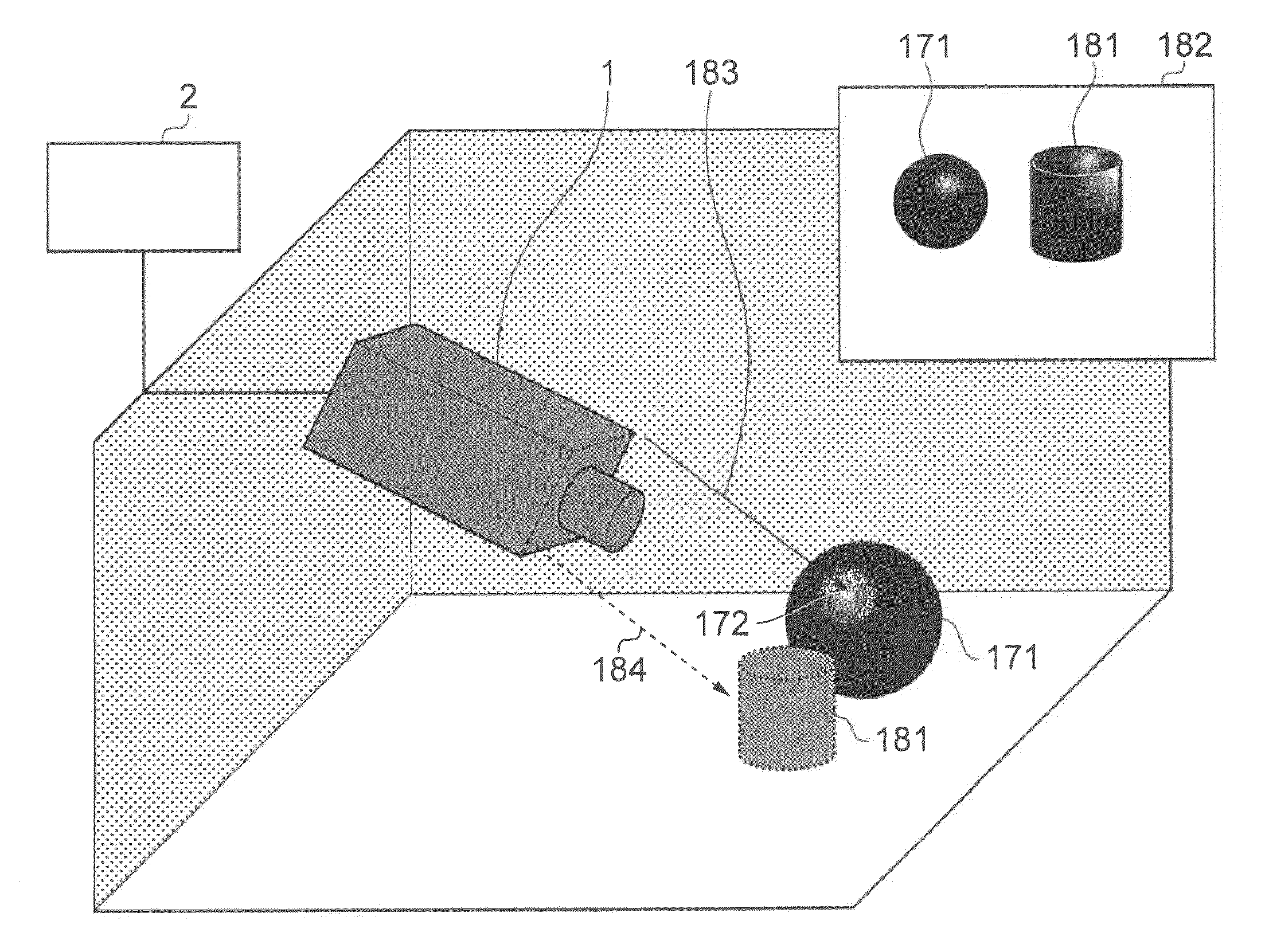Image processing system
a processing system and image technology, applied in the field of image processing, can solve the problems of flickering or wobble, and achieve the effect of reducing inaccuracy
- Summary
- Abstract
- Description
- Claims
- Application Information
AI Technical Summary
Benefits of technology
Problems solved by technology
Method used
Image
Examples
Embodiment Construction
[0042]FIG. 1 provides a schematic diagram of an example of a system for determining camera parameters from a captured image. A camera apparatus 1 is provided which is capable of capturing image data, for example a video signal, representative of a scene as viewed by the camera 1. The camera 1 is connected to an image processor 2. Together the camera 1 and image processor 2 comprise an image processing apparatus. The camera is directed at a calibration surface 3. The camera 1 captures image data representative of the calibration surface 3 and communicates data corresponding to these images back to the image processor 2. The calibration surface 3 includes a calibration pattern. The image processor 2 analyses the images captured by the camera 1 of the calibration surface and uses information derived from the captured images of the calibration surface 3 to determine a set of parameters corresponding to the orientation of the camera 1 relative to the calibration surface 3.
[0043]FIG. 2 il...
PUM
 Login to View More
Login to View More Abstract
Description
Claims
Application Information
 Login to View More
Login to View More - R&D
- Intellectual Property
- Life Sciences
- Materials
- Tech Scout
- Unparalleled Data Quality
- Higher Quality Content
- 60% Fewer Hallucinations
Browse by: Latest US Patents, China's latest patents, Technical Efficacy Thesaurus, Application Domain, Technology Topic, Popular Technical Reports.
© 2025 PatSnap. All rights reserved.Legal|Privacy policy|Modern Slavery Act Transparency Statement|Sitemap|About US| Contact US: help@patsnap.com



